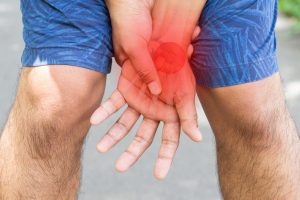 A few years ago I came to the realisation that life does not end at 30 and in my mid 30’s re-ignited my football career. A ‘career’ which previously had been dogged by knee cartilage issues and then a slow recovery from knee keyhole surgery.
A few years ago I came to the realisation that life does not end at 30 and in my mid 30’s re-ignited my football career. A ‘career’ which previously had been dogged by knee cartilage issues and then a slow recovery from knee keyhole surgery.
My ‘gateway’ back in was Tuesday night 5-a-side football in Brixton. Much to my surprise my body held up well – in fact I soon began to realise that the more I played the better I felt. Of course, the problem with softer vices is that they only lead you into the harder stuff. After six months of 5-a-side I felt my fitness had improved and I’d got my touch back (in as much as I ever had it), and therefore I got involved with a Saturday afternoon 11 a side team.
The buzz of being back involved with an 11 a side team was brilliant. The tactical nuances of playing full back (my position) started to come back to me. Like choosing your moments when to attack the ball, when to go on an over lapping run – and probably most importantly, when to stay where you are. I always liked the full back position because it gave vent to my both destructive side (ie getting the ball off the opposition) and my more creative side making attacking runs from deep, when it is harder for the opposition to pick you up.
Pre-season games went well, and I was excited to be heading into my first football season in about 14 years – since I last lined out for Birdhill FC Under-18s in the North Tipperary district league back home in Ireland.
 Then, disaster. Our first league game, away to London Welsh in Chiswick. We’re caught on the counter, and as I’m desperately sprinting back from the half way line to cover the run off one of Gareth Bale’s extended family when I feel that distinctive ‘ting’ and a slight tearing sensation in my hamstring. After bravely trying to continue for a few more minutes I realised my race was run and very dejectedly I left the field – my comeback was over.
Then, disaster. Our first league game, away to London Welsh in Chiswick. We’re caught on the counter, and as I’m desperately sprinting back from the half way line to cover the run off one of Gareth Bale’s extended family when I feel that distinctive ‘ting’ and a slight tearing sensation in my hamstring. After bravely trying to continue for a few more minutes I realised my race was run and very dejectedly I left the field – my comeback was over.
The tale of woe over the next few months would make Daniel Sturridge look like Mr Indestructible. Through a combination of trying to come back too quickly and not doing effective rehabilitation I then proceeded to tweak my hamstring 4 times between September and Christmas. It was soul destroying that every week when the group WhatsApp message came out asking who was available for the following Saturday that I was either not ready yet – or worse, I had freshly reinjured my hamstring. It was also frankly embarrassing, that as physio who deals with sports injuries that I couldn’t sort myself.
Around that time I was studying a module as part of my physiotherapy MSc – ironically enough on lower limb musculoskeletal injuries. The fact I was studying so much was probably a factor in my injury – sitting down for long periods after work was not the best preparation for then sprinting up and down a football pitch on a Saturday. I decided to make hamstring injuries one of my specialist areas to study. I read research articles, listened to blogs and spoke to colleagues who had worked with Arsenal FC and England Rugby. I went deep on hamstrings (and I don’t mean deep tissue massage)!
Here are the key points in what I found out:
- For the first 48 hours, the main aim is to reduce swelling and inflammation through rest and ice.
- After 2-3 days of rest, getting moving is key. Slow jogging and easy bike work are helpful, as long as they aren’t painful.
- Within the first week you can begin general lower limb strengthening (squats, leg press, calf raises) – again if they aren’t painful.
- Essential within the first 4-7 days is to start light-loading of the hamstring. I started doing gentle 2 legged bridges off a bench (see video) as well as doing light work on the hamstring curl machine with 2 legs – yet again all kept within pain limits.
- The key research I came across pertained to eccentric loading of the hamstrings. The research suggests to get back to sports such as football/rugby and reduce your risk of hamstring injuries it is essential to perform eccentric hamstring strengthening. Eccentric strengthening means having tension in the muscle or tendon while it is elongating. An example of this includes, performing a bridge off a bench (see video) by lifting your bottom off the bench with 2 legs, but then taking weight through just one to lower your bottom back down.
- Managing exposure to game time is key. When I got back to playing, I went back slowly. First game 30 minutes. The next 2, I played only 45 minutes. Finally, the 4th game I came through 90 minutes unscathed.
And the good news is that it worked! 3 years on from my ‘injury nightmare’ I haven’t looked back and have hardly missed a game. I’ve since added dead lifting to my hamstring protection exercise programme. The silver lining in injuring my hammy so frequently was that I became expert in treating hamstring injuries. The take home message? Life doesn’t end at 30, but if you want to play football you better get strengthening those hammies!





Comments